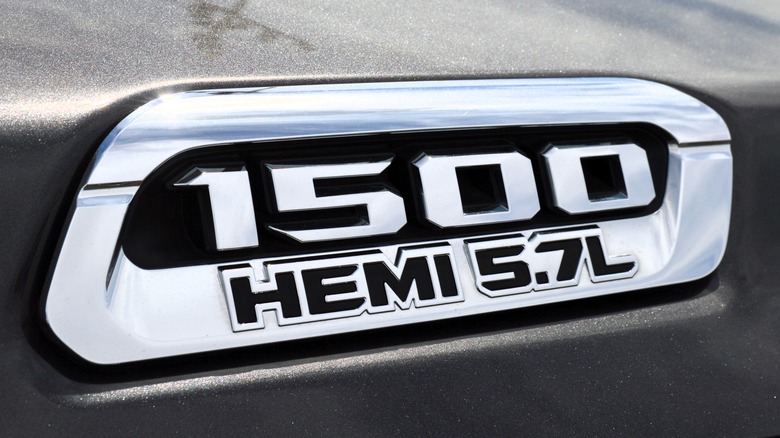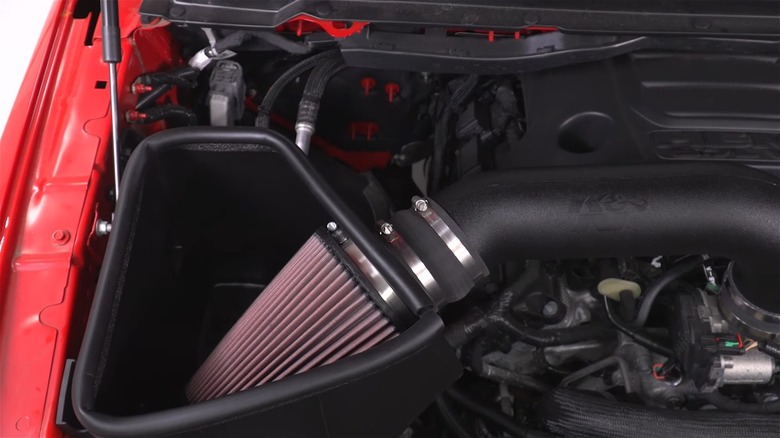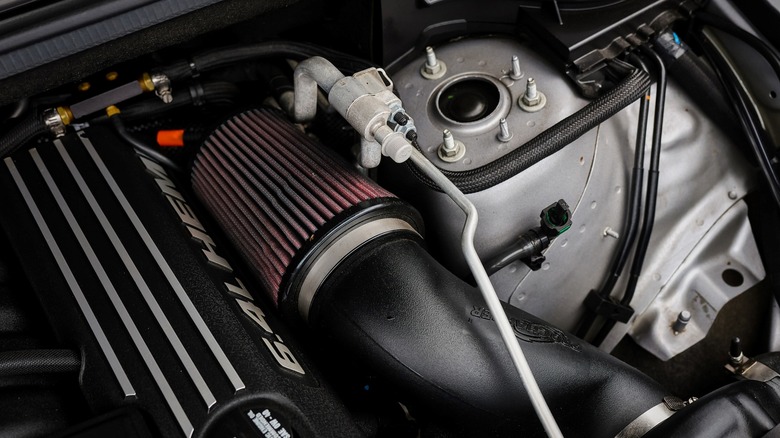Why Cold Air Intakes For HEMI Engines Are Controversial
One of the best aspects of a project build for automotive enthusiasts is the quest for improvements that will add to the vehicle in some way. There are several engine components to replace, add, or tinker with that may offer tangible benefits increasing output, efficiency, and bragging rights. For those with a Hemi engine, a common question on the web is surrounding the use of a cold air intake, and whether it provides any advantages.
For an engine to perform optimally, it must reside within a certain temperature range, and excess heat can cause problems. So, what does a cold air intake do, and is it worth getting one? Instead of bringing hot air into the engine, a cold air intake seeks to mitigate rising temperatures and grab cooler air away from hot engine components. So, wouldn't a Hemi engine benefit from an aftermarket cold air intake?
As it turns out, the opinions on adding a cold air intake to a Hemi are mixed. Some Hemi engines, like the 5th generation found in RAM trucks starting in 2019, already come stock with a cold air intake, so replacement won't net any gain. Aftermarket parts retailers compose the other side of the argument, touting their products' ability to add measurable horsepower, and experts seem divided.
Parts retailers vs auto enthusiasts
It's not that there aren't useful engine modifications and upgrades, but it can become confusing which products to use and how much they enhance output. This confusion is partly due to online parts sellers endorsing their own products and claiming dramatic performance increases. For example, some online parts sellers assert that they verify their horsepower claims using extensive dyno testing. However, there are several variables that can affect the outcome of a dyno test, including temperature, elevation, and climate conditions. This means that deceptive test results can skew toward the part seller's product, promising their component will gain you output when, in reality, this could vary greatly.
According to one aftermarket parts retailer, their cold air intake can boost horsepower in a third-generation Hemi engine by up to nearly 40 hp. However, automotive enthusiasts on Reddit don't agree with posts like, "The intake will do essentially nothing for performance," with another user commenting, "It's been debunked time and time again. Zero horsepower gain." One owner explained, "I've had my S&B for almost a year now. Only difference I've noticed is a deeper exhaust tone and slight whistle when I accelerate."
Expert opinions on cold air intakes
With retail parts stores on one side of the argument and many car enthusiasts on the other, what take do some automotive experts have on the subject? The better an engine can breathe, the more power it can create. The problem is, unless you want to suck all sorts of particulates into your engine, the airflow must be filtered. However, some filters inhibit airflow with their baffle designs. Per a Motortrend reviewer, "Aftermarket intakes work by removing these baffles and smoothing the path for air to reach the engine and combine this with an air filter that has good flow characteristics while maintaining the necessary filtration." The stock intake's limitations can make a cold air intake useful and one of the ways you might get more horsepower out of your car.
However, another expert on Cars.com stated when answering if cold air intakes were advantageous, "Maybe, but in regard to adding an aftermarket cold-air intake system, there are a lot of variables in the equation. But as a stand-alone add-on, a cold-air intake system is probably not going to show much, if any, of a performance improvement." Ultimately, the answer to whether or not you should add a cold air intake to a Hemi depends. Your results will vary based on the engine, other installed components, and aftermarket product quality. Additionally, a cold air intake isn't the only way to modify your vehicle, and there are several popular Hemi engine upgrades to unleash your car's full potential.


